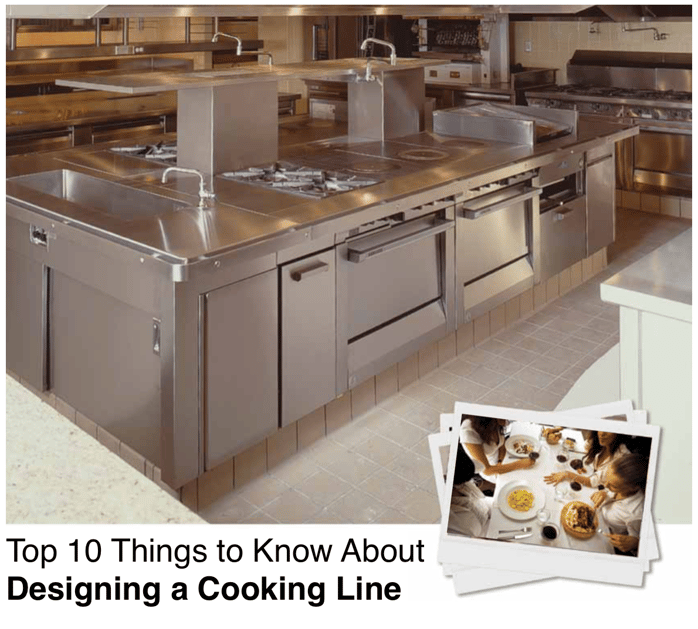
A cooking line or commercial kitchen island is the heart and soul of any commercial foodservice operation. When you consider the types of equipment it can include, it's easy to see why just the right configuration will determine the productiveness and efficiency of what the kitchen can produce.
Let's take a closer look, and delve into the top ten things to know about designing a cooking line for your foodservice operation:
1) Look for limitless cooking combinations. With the right equipment capabilities, operators can arrange their equipment needs in combinations that will enhance the productivity of the kitchen. Make sure your kitchen equipment has the versatility to be rearranged in the ways you want.
2) You obviously have to consider profit. Having the right equipment in the right order will increase efficiency, throughput, and the overall profitability of the operation. This is obviously the main goal of any kitchen.
3) What is the latest technology? Combinations are important when considering cooking line solutions, but so is technology. The latest in technology will improve output capabilities of the operation.
4) Plan thoroughly. Yes, it's important to find equipment that you can rearrange into limitless combinations, but start off right with that first combination. Plan your menus, and consider the operational efficiency of your kitchen accordingly. And do it right the FIRST time.
5) Consider the items you'll need for every cooking process. Will you have a need for storage or refrigeration under your cooking line? What else will you need? Consider all factors.
6) How much space do you have? Find equipment that will deliver the types of cooking processes, with the right amount of power and capability, in the space given.
7) Is your cooking line equipment compatible with other equipment lines? For example, if you do determine that you need storage or refrigeration, does your range or griddle arrangement accommodate those lines of equipment?
8) Make your cooking line and commercial kitchen island attractive to chefs. If you're providing precision and efficiency in the workplace, it will be a more enticing working environment for not only current chefs, but also for attracting new talent.
9) Look for durability. A commercial kitchen is a hot, busy, hectic place. Your cooking equipment will get a lot of wear and tear. Look for equipment that will stand up to the demands you intend to place on it.
10) Is it easy to install and maintain? At the end of the day, if equipment requires more time and energy to maintain and clean than it does to actually use, it's probably a waste of time.
***11) Here's a bonus point. Do you have a way to map out your commercial kitchen island or cooking line? Consider reviewing material that talks about the potential of modular island suites to help you build the best cooking line possible.





